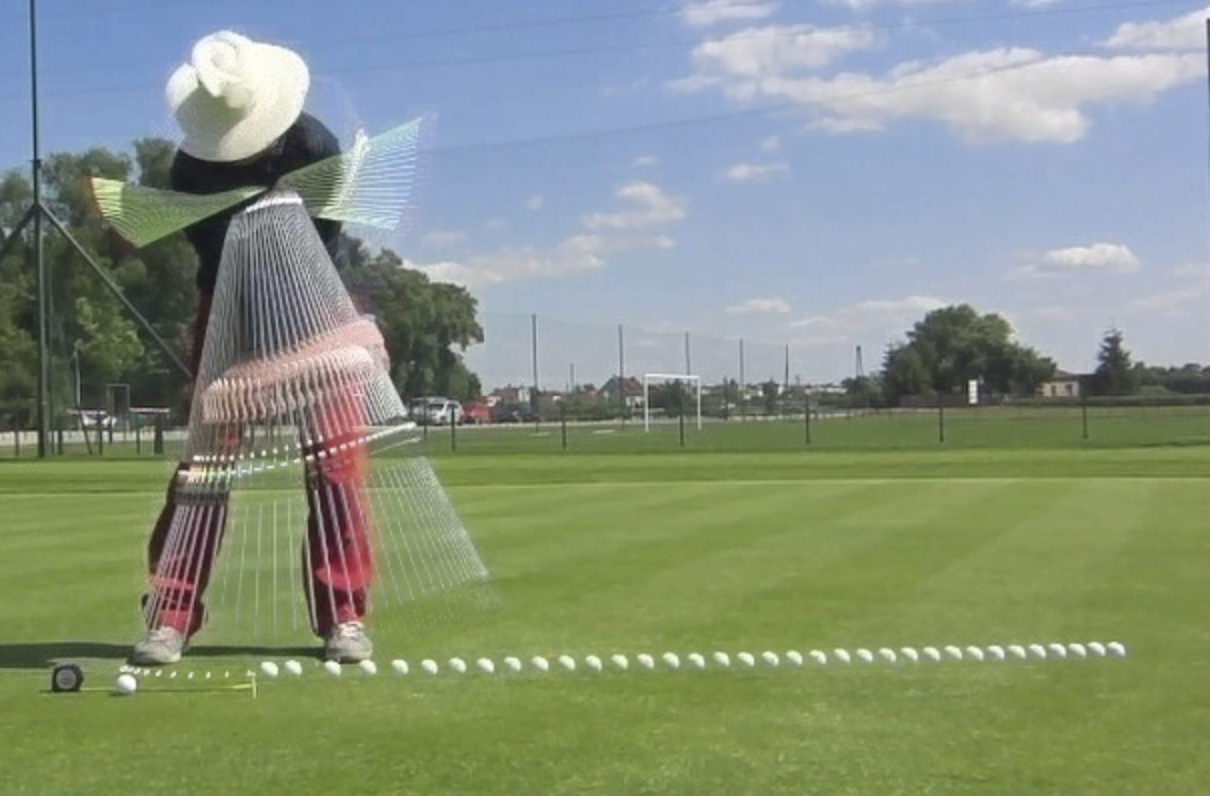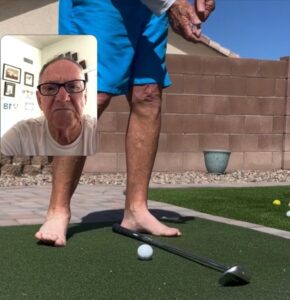Deliberate Practice, Flow State Practice, and Focus Practice

The reference materials for these rabbit holes we’re about to jump in are: Peak by Anders Ericsson, Flow by Mihaly Csikszentmihalyi, Wherever You Go, You Are There by Jon Kabot-Zinn, and The Huberman Lab Podcast #88. Rabbit holes from these treasures are close to infinite so we’ll jump right in.
Rabbit Hole 1. Deliberate Practice. For starters deliberate practice is a combination of physical and mental exercise. You have to mentally create the performance motion you want to develop (based on the concept of the motion in your mind); it most likely is not the entire golf swing or putting stroke. It can be a measured drill or even going to the gym to increase leg strength. The example I’m presenting is the deliberate practice of moving my body’s mass to be balanced exactly over my left ankle with as much forward pressure as I can during a ten yard chip shot. If done properly the result should be the bottom of the arc of my wedge being four inches in front of/after the ball. I’ll measure it by the result (best device for measuring may be Trackman, but I don’t have/want one:). I’ll also measure it with video by observing a vertical line from my left ankle to my hip with the goal of being pure vertical with no back up (counterbalance). The process adapts after each measurement.
The first m otion is performing what feels like 16 practice swings. The feels are being on my left foot, increasing pressure there, and seeing and feeling the grip pressure release what looks like just past the ball. The result was a miss short and right. The video showed my left hip actually moving away from the target; counterbalancing from the small increase in centrifugal weight of the club.
otion is performing what feels like 16 practice swings. The feels are being on my left foot, increasing pressure there, and seeing and feeling the grip pressure release what looks like just past the ball. The result was a miss short and right. The video showed my left hip actually moving away from the target; counterbalancing from the small increase in centrifugal weight of the club.

The second motion adapts to the feedback of backing up due to counter balance. I like the left foot pressure, but the grip pressure release moving forward needed to change to a feeling of an up motion to let the release happen forward of the ball. Ball flight was short and right, same result. The left hip moved back away from the target counterbalancing again. (my frustration is another rabbit hole, let’s go there another time).
Here is a big key to deliberate practice! Constraints! I took the club away and used it to show me where four inches past the ball really is. The feel on my left side felt a lot more pressure. Practice swings without the distraction of the weight of the club. The mental thought was, ‘move left on the foot, feel the hands move up.’ After a few reps I played the shot: vertical hip, ball in the hole. I practiced that process for ten minutes the stopped.
Rabbit Hole 2: Flow State Practice. Flow state or the zone is learned mental skill. For us golfers that means we need repetitions of flow practice to develop the mental state. Question is what are we repeating? The short answer is processing toward a goal with no interference; that is difficult, to say the least. Staying focused on the goal of rock climbing to get to the top isn’t as important as the process of rock climbing. The fun of rock climbing is doing it; that’s where the flow state lies. Getting lost in the process with no concept of time is where we want to go. Great for rock climbing but not so for golf. After every shot there is a respite, a wide open time for distraction (and plenty there are). But let’s change out rock climbing let’s consider a golf shot. If you ask a great player what they were thinking during the most spectacular shot of their lives they’ll pretty much say “nothing.” If we measure which part of their brain was turned on the right side, where the creativity resides, would be brightest (when you analyze what you’re doing the rest of it lights up and you slow down). So when that player answers “nothing” what they really should say is “having fun” or better yet “being happy!” If the feedback isn’t accepted for some reason (perfectionist, ball in water, slice) the golfer is now distracted, angry, and will probably over analyze even more. Flow practice is preparing for each shot the same general way. Based on the condition of the balls environment (long winded way to say on a tee, green, divot), see the start line of the shot and distance required, see your concept of bodily motion required (feel it with a practice swing or two), see concepts of club motion required (low point, square club face), and select your point of focus; something to trigger the flow state during the shot. Mentally stay there as you perform the shot (like my left foot in the video).
Rabbit Hole 3. Focus Practice. The previous paragraph finished, “select your point of focus; something to trigger the flow state. Stay there as you perform the shot.” If there is a distraction the flow is gone, period! Stop and start the process all over; some professionals go so far as putting the club back in the bag only to take it out again to restart the process. Have you ever imaged what a golfer is thinking as they stand over a shot for what seems forever? Guaranteed not on their focus point! How can I cut distractions out of my focus? You cant! What you can do is increase the dwell time between distractions and emotional responses. I feel meditation is the key to increased dwell time, and just like building muscle it is going to take repetitions to become strong. Counting breathes backwards is a good way to practice focus, and meditation. “Inhale 5 exhale 5, inhale 4 exhale 4, etc…” before you do your shot process (or throughout the day). For this chip shot my focus point was my left foot, my process goal was to hold my intention there with no interference. The result feedback was the ball on target, the focus practice feedback was the answer to the question, “did I hold my intention on my foot?” If I did great do it again, if not do it again with more awareness of your intention.
Rabbit Hole 4. Notes on Play. No two shots are ever alike, but every shot deserves the same attention. Trying during the motion creates emotion which is a distraction, which is failure, which creates negative emotion, which creates this rabbit hole I’m spiraling down right now just writing this. The time to analyze the shot is before you address the ball. Repeating lines from Rabbit Hole 2, “Based on the condition of the balls environment, see the start line of the shot and distance required, see your concept of bodily motion required (practice swing or two), see concepts of club motion required , and select your point of focus; something to trigger the flow state during the shot. Mentally stay there as you perform the shot.” The nervous system and mind are incapable of happiness or sadness while analyzing anything. Analyze the feedback after the shot, I hope the process of focus makes you happy.
Link to the video: https://www.youtube.com/watch?v=l96hK1sfGrs






